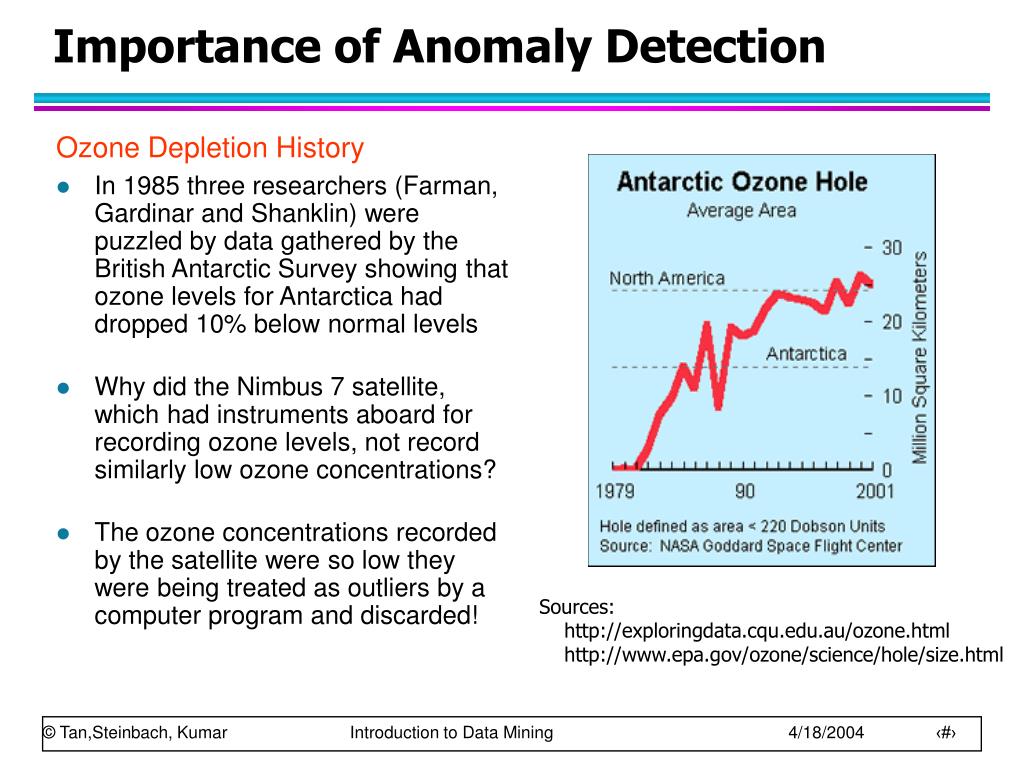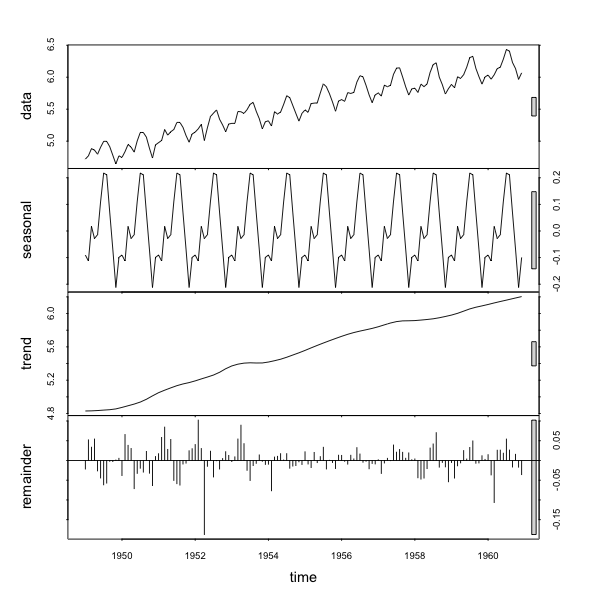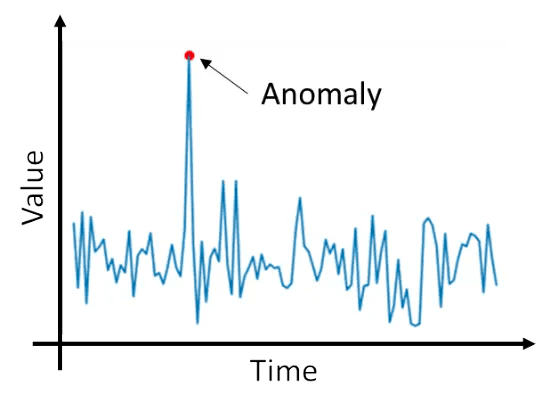

#ANOMALY DETECTION FULL#
The Preview Window works with full or higher resolution views. To preview how the anomaly detection will look before processing, enable the Preview check box.It works by calculating a Normalized Difference Vegetation Index (NDVI) for the input image, then re-scaling the RXD results inversely proportional to the NDVI. This option is best used when vegetation is a minor component of the image. Enable the Suppress Vegetation check box to optionally suppress vegetation anomalies in the RXD results.The allowable range is from 9 to 99, and the value must be an odd number (e.g., 9 = 9x9 pixels). Specify a kernel size, in pixels, around a given pixel that will be used to create a mean spectrum. If you choose Local, for the Mean Calculation Method,the Kernel Size field is enabled.You can specify whether the mean spectrum should be derived from the full dataset ( Global) or from a localized kernel around the pixel ( Local). Select the Mean Calculation Method to use from the drop-down list.In this case, using UTD by itself does not detect the anomalies, but using RXD-UTD enhances them. The best condition to use RXD-UTD is when the anomalies have an energy level that is comparable to, or less than, that of the background. Subtracting UTD from RXD suppresses the background and enhances the anomalies of interest. RXD-UTD A hybrid of the RXD and UTD methods, in which ( r - 1) is used as the matched signature.UTD extracts background signatures as anomalies and provides a good estimate of the image background. UTD and RXD work exactly the same, but instead of using a sample vector from the data (as with RXD), UTD uses the unit vector. UTD Uniform Target Detector, in which the anomaly is defined using (1 - μ) as the matched signature, rather than ( r - μ).In the Anomaly Detection panel, select one of the following options from the Anomaly Detection Method drop-down list:.The image location is not retained for pixel-based images or those with pseudo or arbitrary projections. If the selected file is displayed in an active view before you start the workflow, the display bands and image location are retained, as well as any brightness, contrast, stretch, and sharpen settings. The Anomaly Detection panel appears and the file opens in a new workflow view. To apply a mask, select the Input Mask tab in the File Selection panel. Select an input file from the File Selection dialog. See the following for help on a particular step of the workflow:įrom the Toolbox, select Anomaly Detection > Anomaly Detection Workflow. Yu, Adaptive multiple-band CFAR detection of an optical pattern with unknown spectral distribution. IEEE Transactions on Geoscience and Remote Sensing, Vol. Anomaly detection and classification for hyperspectral imagery. Currently, this algorithm does not differentiate detected anomalies from one another.Ĭhang, Chein-I, and Shao-Shan Chiang, 2002. As with any spectral algorithm, exclusion of bad bands increases the accuracy of results. Bad pixels or lines appear as anomalous, but they do not affect the detection of other, valid anomalies. RXD works with multispectral and hyperspectral images. Where r is the sample vector, μ is the sample mean, and K LxL is the sample covariance matrix. ENVI implements the standard RXD algorithm: Results from RXD analysis are unambiguous and have proven very effective in detecting subtle spectral features. RXD is effective when the anomalous targets are sufficiently small, relative to the background.


This algorithm extracts targets that are spectrally distinct from the image background. The Anomaly Detection workflow uses the Reed-Xiaoli Detector (RXD) algorithm to identify the spectral or color differences between a region to test and its neighboring pixels or the entire dataset.


 0 kommentar(er)
0 kommentar(er)
